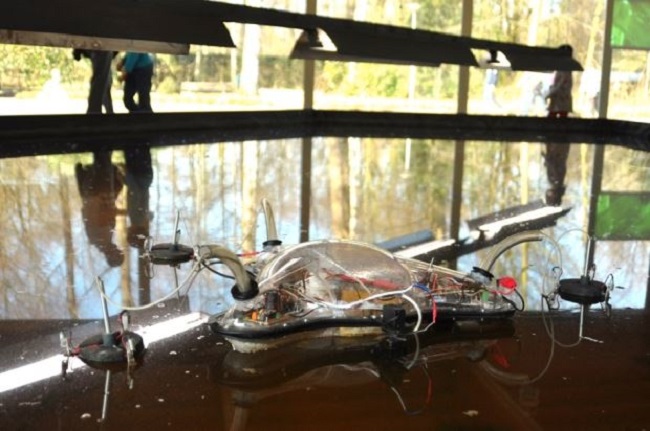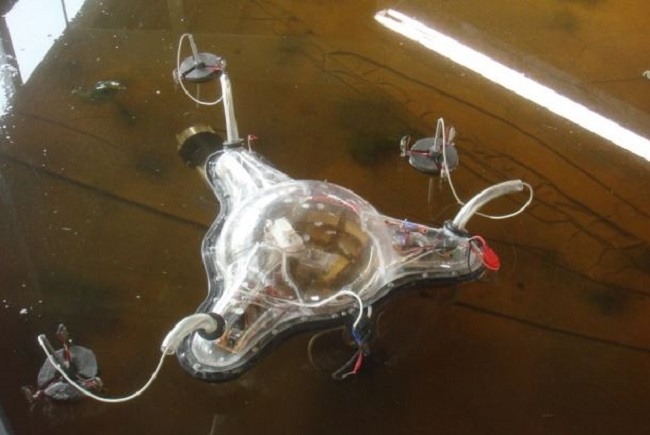The Symbiotic Machine is an autonomous and self-sustained bio-machine that engages in photosynthesis after consuming photosynthetic algae. Conceived by the collaborative effort of transdisciplinary artist and researcher Ivan Henriques and scientists from the Vrije Universiteit Amsterdam in the Netherlands, the robot creates a symbiotic bond with the eco system it inhabits, drawing energy from the organisms it collects to fuel further collection efforts.

The machine is programmed to eat, move, sunbathe, recharge, wash itself and repeat the entire process in an ongoing loop. Henriques wanted mirror the autonomous nature of a biological system by creating an artificial living system that seeks out its own food, processes it, and uses that energy to further its life cycle. Symbiotic Machine was specifically constructed to eat the Spirogyra algae, a filamentous floating organism commonly found throughout the Netherlands; it can be also used to cleanse environments of harmful algae.

Robotic chassis
In order to be able to reach the congealing Spirogyra algae, the Symbiotic Machine must first be able to float. Its chassis is shaped into an ellipsoid of revolution to maximize the amount of sunlight the robot can capture with its embedded photocells. Attached to the ellipsoid are three conical shaped arms, each connected to a sensor-equipped tentacle used for finding the algae. Finally, a mouth-like component allows the Symbiotic Machine to capture and grind the algae, breaking down cell membranes to release the micro particles that are harvest for energy in the machine’s belly.
How is energy made?
The robot’s digestive system plays a key role in energy harvesting; it features a mouth, stomach, and anus, all along a single axis similar to a jellyfish. After the algae is grinded into a green muck, the juice flows into a stomach chamber lined with parallel photocells composed of gold covered plates that are lined with copper mesh in-between. Once sunlight shines on the electrons of the grinded algae, they become drawn to the conductive metal plates, similar to how a lemon battery extracts electrons from citric acid. An LTC 3108 Energy Harvester electronic chip stores this mili-voltage into two rechargeable AA batteries. Any excess water pulled with the algae is flushed from the robot’s rear end, propelling its movement forward.
On exhibit
The Symbiotic Machine is currently on display at the aquarium in the Glass House in Amstelpark in Amsterdam until the end of the month, otherwise, you can watch the robot hunt algae in the video below.
Via psfk
Advertisement
Learn more about Electronic Products Magazine





